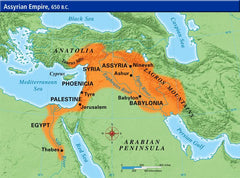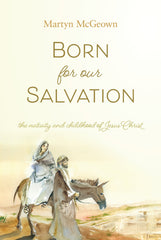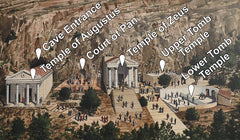Your cart is empty now.

July Standard Bearer preview article
This article is written by Rev. Cory Griess and will be published in the July 2019 issue of the Standard Bearer.
 Click to read as printed in the July 2019 issue.
Click to read as printed in the July 2019 issue.
______________
The Reformation and the Lord’s Supper in worship
Introduction
The Lord’s Supper in the dialogue of worship was not always understood the scriptural way we have described it in these articles. In our previous article we examined how Rome views the Lord’s Supper in worship. In this article we want to understand how and why the Reformation was used of God to restore the church to a proper understanding of the Lord’s Supper in worship.
Restoration of the gospel
When the Reformation returned the church to the truth of the gospel, everything changed also in worship. In God’s sovereign mercy, Martin Luther, who had access to Scripture, began to see the truth of the Word of God. Particularly, he saw that Scripture taught the once-for-all sacrifice of Christ on the cross that effectually atoned for the sins of all His people, so that they are justified by an imputed, alien righteousness alone.
He, and all the Reformers after him, saw what is taught in Hebrews 7. The priesthood was fulfilled in Christ who offered Himself the full and final sacrifice, from God’s side for us, so that there are to be no more priests offering sacrifices for sin. The entire book of Hebrews is written to early Jewish converts to the faith. These converts were being pressured heavily by their unconverted families and friends to go back to the Jewish system of priests and sacrifices. These family and friends repeatedly said to them, “You need a daily sacrifice as atonement for your sins. Because you sin daily, you need a sacrifice daily. Who are you to think you do not need the priests?” And the book of Hebrews was written to show these converts tempted by this that
Christ is the great Priest to end all priests, and He is the great sacrifice to end all sacrifices.
The Roman Catholic teaching is eerily similar to the Judaism of the time of the book of Hebrews. Hence, Hebrews was written, you could say, also to combat the heresy in the Roman Catholic Church. Both points, about Christ the Priest and Christ the sacrifice, are made in chapter 7. First, by connecting Christ to the priesthood of Melchizedek, the writer shows that the Old Testament prophesied of one priest who was coming who would fulfill and supersede the whole Levitical system. And then, second, Hebrews 7 says, this priest who is priest forever, is both priest and sacrifice. Hebrews 7:27, “Who needeth not daily, as those high priests, to offer up sacrifice, first for his own sins, and then for the people’s: for this he did once, when he offered up himself.”
By doing so, He redeemed us once for all. Christ is the great sacrifice, the spotless Lamb, offered once to bear the sins of many and to pay for them once for all. All of that is finished; there is no more need of sacrifices. We ask for forgiveness daily, and that reality of Christ’s sacrifice is applied to our consciences, but the sacrifice itself is over. He really meant it when He said, “It is finished.” We are justified by this one sacrifice of Christ alone. Everything necessary for our salvation was finished by Jesus Christ upon the cross. By grace alone, on the basis of the cross alone, you may be assured you are forgiven, now and forever. And God delights to tell His people this.
Restoration of worship
This meant that everything about the worship service had to change. Now the whole event switched gears. Traffic changed directions. It mainly flowed from His side to ours, with believers only giving response. The Reformers took Ecclesiastes 5:1 seriously, “Keep thy foot when thou goest to the house of God, and be more ready to hear [more ready for God to speak to you, and to only respond to Him] than to give the sacrifice of fools: for they consider not that they do evil.” (Was this not written to describe the mass? Do not come to the house of God to offer the sacrifice of fools; come to hear God speak to you.) God calls us to the covenantal assembly primarily that, as the sovereign of the covenant, He might speak to us about what He has done and is doing; and when we speak, it is merely to respond in praise for what He says.
The Scriptures then began to be read in the language of the people. Preaching came back to its central position as the voice of God to His people. The sacraments took their rightful place as signs and seals of what is preached, adding nothing new, but functioning as a different way God speaks to His people to assure them. The worship service became a place not where we offered a sacrifice to appease a God vengeful toward His people, but where God speaks of covenant mercies, of His wrath propitiated by His own work on behalf of His dear children, and of a life of gratitude.
Restoration of the Lord’s Supper in worship
The Lord’s Supper itself was stripped of all the man-made elements and returned to what it was in Scripture. It became a celebration of the finished work of Christ applied to His people. The altar was removed and a table was put in its place. The table was on the ground level, as a sign that God was coming down, condescending to give to His people. The priest was turned into a minister, and he was turned around. No longer was his back to the people, as though he represented the people giving something to God. Rather, he faced the people for he spoke for God to them. In the Supper he showed the once-for-all death of Christ to God’s people, and gave them the elements so that they could be assured it was for them. And their part was to receive it by the faith God gives and respond in prayer and praise.
Truths for which to die
Do you see what our heritage is by the sovereign providence of God? People are losing it, in part because they do not know why they have it. Do you see how serious these matters are? People are losing it because they do not know how serious it is. The heart of the gospel was recovered in the Reformation and that changed everything about worship too, including the element of the Lord’s Supper. Rome’s is a false gospel. Rome’s belongs to a false church. Rome’s mass consists of false worship.
And that is the reason why so many were willing to die for rejecting Rome’s heresy at the time of the Reformation and beyond. Rome said at the time of the Reformation, and still says, “If anyone denies that in the sacrament... are contained truly, really, and substantially, the body and blood, together with the soul and divinity of our Lord Jesus Christ…but saith that He is only in the bread and wine as a sign…let him be anathema.”[1] And they took that anathema seriously at the time of the Reformation, backing it up with steel and fire.
In order to hold on to their power, the Roman Catholic Church and her servants put to death hundreds if not thousands of people for denying Rome’s false gospel and holding to the once-for-all sacrifice of Christ upon His cross. At the time of Bloody Mary in England over 200 believers were killed, not just for the truth generally, but for this truth about the Lord’s Supper. The sixteen-year-old rightful Queen of England (Lady Jane Grey) was beheaded for it. John Rogers, the faithful Calvinist minister, was also killed for it. Rogers was burned at the stake, and this was his crime: denying the real, physical presence of Christ in the Lord’s Supper brought down to the earth by the Roman Catholic priest to be re-sacrificed for sin. On the way to the stake Rogers was met by his wife and his eleven children, one an infant in her arms. A painful parting. Yet the record says, “Cheerfully and patiently he continued to Smithfield where he was burnt to ashes in the presence of a great number of people, and his soul ascended to his Redeemer.”[2]
May God give us such love and zeal for His glory, for His truth, and for His worship.
_____________
[1] Canons of the Council of Trent. “Concerning the Most Holy Sacrament of the Eucharist.” Canon 1.
[2] Hallihan, CP. The Authorized Version: A Wonderful and Unfinished History (London: Trinitarian Bible Society, 2010), 35.
The content of the article above is the sole responsibility of the article author. This article does not necessarily reflect the opinions and beliefs of the Reformed Free Publishing staff or Association, and the article author does not speak for the RFPA.

Donate
Your contributions make it possible for us to reach Christians in more markets and more lands around the world than ever before.
Select Frequency
Enter Amount










